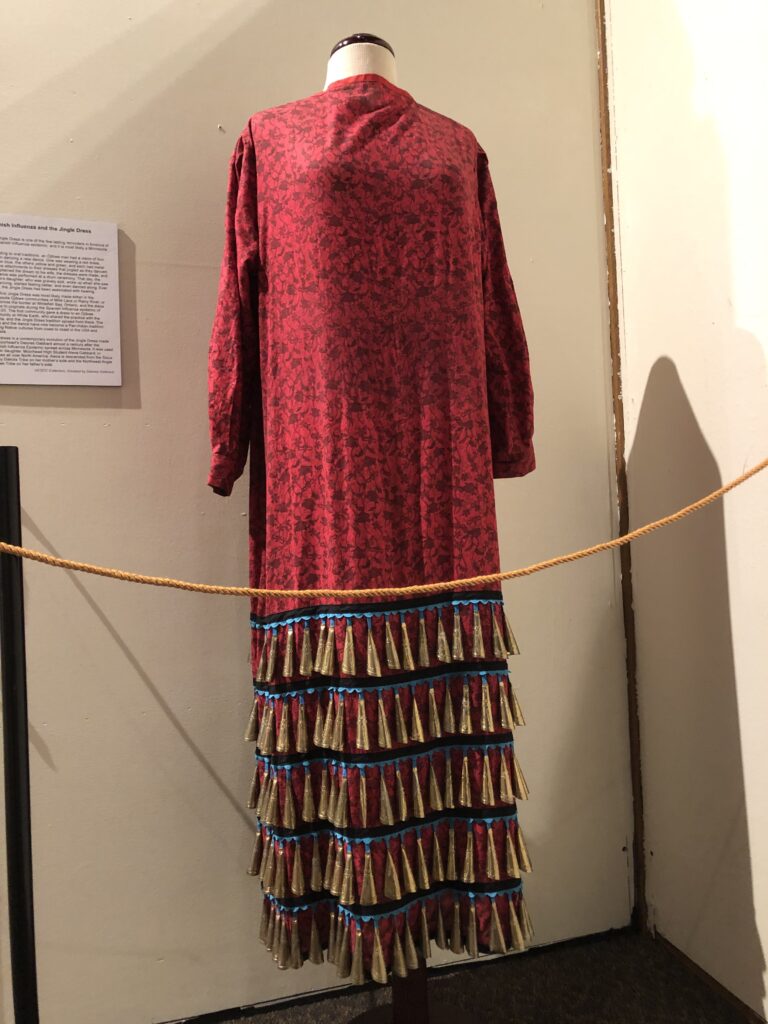
Alexa Gabbard’s Jingle Dress at the Hjemkomst Center
clay county histories
Markus Krueger | Program Director HCSCC
The internet is filled with articles about how “____ will never be the same after COVID!” The writers claim everything from concerts to handshakes will go extinct, and we will be dining in plexiglass cubes inside of restaurants from here on out. I don’t buy it. I think the very minute we are told it’s okay we will throw away our masks, slip into the nearest crowd, and go back to hugging each other hello and sharing milkshakes. Humans have been through plenty of plagues in the past and we always seem to forget them as soon as we can safely return to normal.
For instance, between 1918-1920 about a third of the world’s population came down with Spanish Influenza, killing an estimated 50 million worldwide and 675,000 in the USA, and yet it almost completely disappeared from American memory until we all suddenly became very interested in historic global pandemics in the spring of 2020.
In fact, I can only think of one lasting reminder of Spanish Influenza in American culture: The Jingle Dress. And it happens to be, most likely, a Minnesota story.
Ojibwe communities at Mille Lacs and Rainy River in Minnesota, and Whitefish Bay just across the border in Ontario, each have local versions of the Jingle Dress origin story. An Ojibwe man had a vision of four women dancing a new dance. One was wearing a red dress, another blue, the others yellow and green, and each had metal bell-like attachments to their dresses that jingled as they danced. He explained the dream to his wife, the dresses were made, and the dance was performed at a drum ceremony. At the ceremony, the couple’s daughter, who was gravely sick, woke up when she saw the dancing, started feeling better, and even danced along. Ever since, the Jingle Dress has been associated with healing.
That first community gave a dress to an Ojibwe community at White Earth, who shared the practice with the Dakota, and the Jingle Dress tradition spread from there. The dress and the dance have now become a Pan-Indian tradition among Native cultures from coast to coast in the USA and Canada. As best as scholars and tribal historians can figure, this tradition began right about 1920 during the Spanish Influenza epidemic.
Our museum at the Hjemkomst Center has an exhibit about how our communities dealt with the simultaneous terrors of Spanish Influenza and World War I. If you go there you will see on display the Jingle Dress of MSUM student Alexa Gabbard, made by her mother Delores when Alexa was at Moorhead High. The dress is a contemporary take on the evolving century-old tradition. Alexa, who is descended from the Sioux Valley Dakota Tribe on her mother’s side and the Northwest Angle Ojibwe Tribe on her father’s side, has worn it in dances all over North America. The Gabbards donated the dress to the Historical and Cultural Society of Clay County last year.

